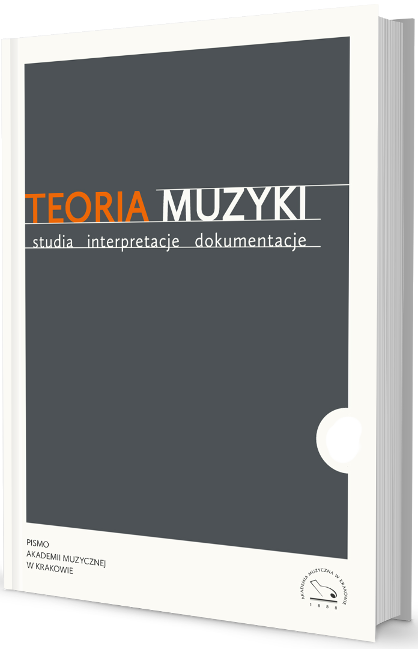To jeszcze muzyka?
O sztuce nowych mediów
i twórczości elektroakustycznej
Is this Still music? On New Media art and Electroacoustic Creativity
Author(s): Andrzej MądroSubject(s): Music
Published by: Akademia Muzyczna w Krakowie im. Krzysztofa Pendereckiego
Summary/Abstract: New media changed the world. Its rapid expansion influenced every aspect of life, including the shape of musical culture and artists’ awareness. Electronics based on analogue technologies – and later, digital ones – revolutionised methods of composing, notating, recording, performing, listening to and distributing music. The term “music” seems to be insufficient or even unfit to cover the multiple phenomena which appeared as part of the sound of media art. New media introduced such a significant input into artistic work that it might be described as a musical paradigm shift. Such changes are overlooked in Polish musicological reflection. New media and related technologies radically changed the way of approaching musical colour and space, the methods of analysing, shaping and perceiving them; they showed just how many possibilities open – but also problems arise – in this regard. Thanks to new media, something a composer could only dream of became possible: the simultaneous juxtaposition of various types of musical space, and thus the shaping of a completely different sonic, acoustic, perceptual and aesthetic situation. Thanks to new media, musical art arrived at the point where every type of data – vibration, pressure, movement, light – can be transformed into sound. In other words, everything may play the role of a musical instrument. At the same time, the traditional method of expressing thought typical for language is being abandoned in favour of simultaneous thinking with sound, image and other sensory experiences. The art consumer, passive until now, is increasingly encouraged when encountering new media to co-create its artefacts; thus he becomes an interactor. Interactivity, together with virtuality, providing a large advantage to new media over old forms, may pertain to various aspects of a work of art, including the so-called hardware and software interfaces defining the composer’s way of working with sound material. Thus it does not refer to perception exclusively, but also to the artist’s new situation in general: the creative act, its reception, and the work itself – which is no longer an artefact, but a process.
Journal: Teoria Muzyki. Studia, Interpretacje, Dokumentacje
- Issue Year: III/2015
- Issue No: 6
- Page Range: 77-92
- Page Count: 16
- Language: Polish

